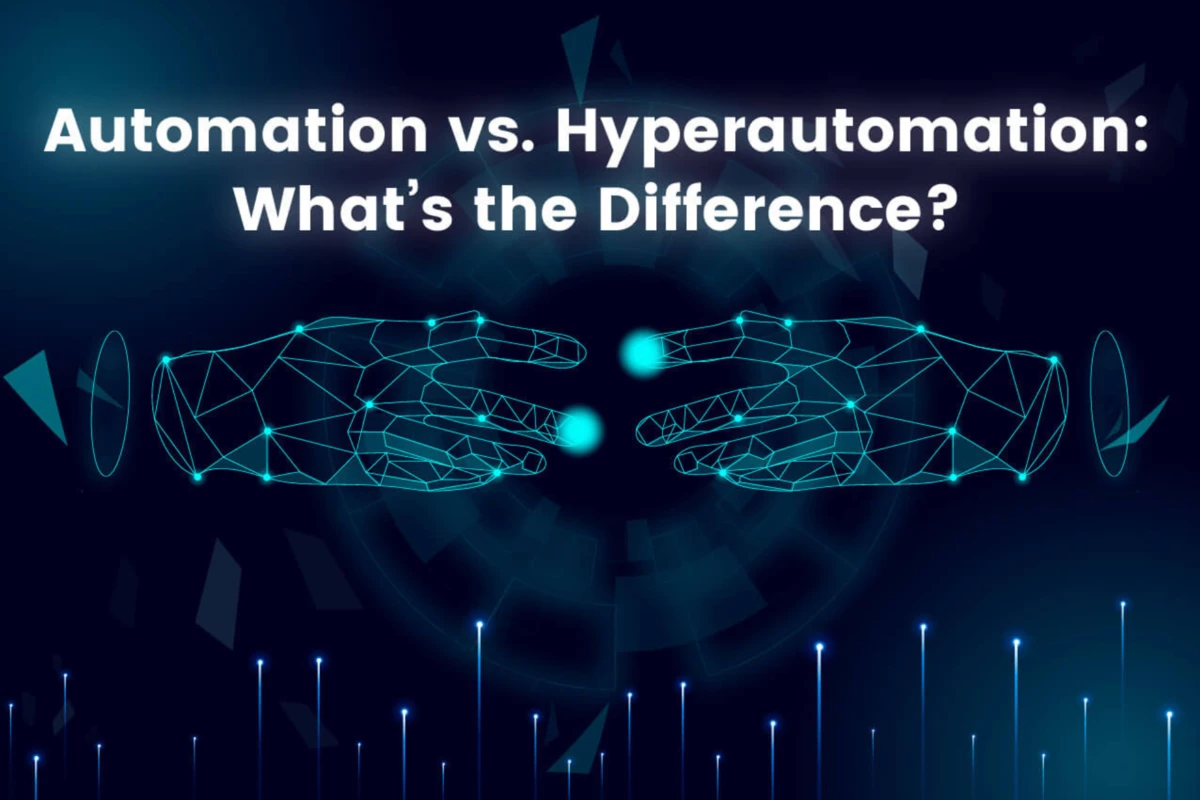With RPA in Insurance, you can make your processes 30 times faster. We are in a period where each day breaks to face a new technology, and the whole world is under the control of these different technologies. Robot Process Automation is one of the emerging technologies with many promises for different niches.
Robotic Process Automation is software technology that works on software robots. Artificial Intelligence performs tasks like controlling desktop operations, collecting data based on certain aspects, feeding the gathered data to some programs, and manipulating the data formerly gathered from former processes as per the current situation.
The insurance sector is facing a flex point where the growth of technologies is driving outgrowth-concentrated operations. Unfortunately, not all insurers have the culture or capacity to embrace change.
Therefore, to address these challenges and drive them to a benefit, insurers, agents, and brokers are turning to RPA. Insurance is not time-consuming, and non-automatic processes like data entry, report generation, and legacy operations can’t integrate.
What is RPA in insurance?
We live in a period where each day brings new technology, and these technologies have complete influence over the entire earth. Robotic Process Automation( RPA) is a new technology with significant growth in many industries.
Every day, the insurance sector suffers from an overkill of tedious clerical work, performing lower customer satisfaction and time waste.
In addition, insurers are overburdened with routine, repetitious, and functional duties performing day-to-day insurance operations like Undertaking claims processing, Policy cancelling, and more, which has emerged in growing charges and a halt in the insurance industry’s growth. RPA in the insurance sector has broadly accepted the technology that will dramatically increase the sector’s effectiveness and client focus.
Challenges faced in the Insurance Industry
Before we discuss RPA in insurance, the industry faced many challenges. Some of the challenges are:
Operational Roadblocks
Operations in the insurance sector get operated by non-automatic, time-consuming, and repetitious processes. While manual risk appraisal in underwriting is time-consuming and dependent on destined criteria, unautomated data processing from unshaped sources in claims administration is slow and prone to mistakes.
A Large quantity of data.
Present hyperconnected world, essential data is constantly flowing into the insurance industry. But insurers lack applicable technology and an over-reliance on manual data running.
Poor client Experience
It’s worth noting that the Above industry issues stem primarily from insurance cover-reliance on non-automated processes. Visitors leave with seriously unsatisfying experiences as a result of these problems.
Benefits of RPA in Insurance
RPA improves insurance companies’ enhancement by improving compliance, making claims management, and increasing efficiency, similar to automating operations. Further, some of the benefits of using RPA bots in your insurance employer include:
Process claims emerge faster
Employees want to acquire statistics from many departments and feed them into multiple structures to process claims. Employees spend countless time manually processing applications. As a result, a lengthy processing time affects customer satisfaction. RPA lets bots accumulate statistics from multiple structures and position them collectively in a single place, making claim processing easier.
Boosts Data Accuracy
RPA bots, not like humans, execute data access 24 hours a day, seven days a week, and not having interruptions. RPA bots must be well-programmed to gather the appropriate data.
Simplified New Business Onboarding
Scaling to meet the demands of every consumer turns into greater complexity when insurance firms add more clients. RPA bots can automate onboarding, stirring up the process and enhancing the consumer experience. The bots do now no longer necessitate the set-up of infrastructure. RPA is integrated into an organization’s present infrastructure for aiding in sales, marketing, human resources, and others. Hence, RPA improves prevailing systems, letting them perform higher than ever before.
DOWNLOAD OUR REPORT RPAUse cases of RPA in Insurance
The potential of RPA to unify back-workplace environments with front-end technology so one can automate end-to-end lifecycle procedures is what makes the technology an excellent healthy for insurance. Let us speak about the essential regions where insurance is put in force by RPA:
Underwriting
Underwriting assists clients with risks and exposures and commonly takes more than 2-3 weeks to entangle, examine and decide the risks concerned earlier than concluding. Robotic process automation allows the automation of a method that includes records from a few internal and external sites. Therefore, minimizing the time for underwriting.
RPA additionally facilitates to offer of essential records to many fields in inner structures and to put together a document or create recommendations even as comparing run losses, consequently automating the underlying method of product underwriting and pricing.
Business Process and Analytics
Only by measuring what they may be doing will insurance companies tend to enhance and serve their clients. There is difficulty tracking and measuring operational productivity or discovering regions for development because of functional and paper-intensive procedures. With automation methods in place, software bots detect without effort. The number of transactions treated and exceptions encountered is measured using RPA in Insurance. The audit trail by RPA promotes regulatory compliance and, as a result, technique development. As a result, claim and customer support responses increase, and clients advantage from simplified applications.
Regulatory Compliance
Insurance firms depend upon many compliance requirements, including HIPAA privacy rules, PCI requirements, tax guidelines, etc. These conditions change with time. Similarly, these compliances protect business operations. However, customers and organizations discover it hard to stick on to them. It may be very smooth to adhere to the compliance requirements with the implementation of RPA.
Policy Cancellation
The non-automatic policy cancellation procedure is time-consuming and repetitious work for insurance agents.
By processing policy cancellation requests, insurance agents must interact with dispatch, CRM, Excel, and PDFs to pierce data. Also, policy cancellation involves numerous transactional tasks like cancellation date, commencement date, policy term, and more.
But with automation in insurance, policy cancellation can be carried out just one-third of the time. RPA can seamlessly switch through all the relations and give quick resolutions to the visitors.
Claim Processing Automation
Claims processing automation requires gathering data from many sources and performing in massive quantities of data. Equally important, current claim processing systems warrant functionality and rigidity, and they’ve reached their practical limits, performing in a high position of human processing. As a result, productivity and flexibility have suffered, performing in slower service and a worse client experience. AI is slowly included in the claims operation process to reduce costs.
Robotic Process Automation (RPA) has a range of marketable benefits. For claim processing automation, RPA provides results for integrating multiple claim processing data from other sources. Still, it can automate work processes in the insurance sector, same as data extraction, complex error following, claim verification, integration of claim-applicable data sources, and more, helping the faster processor and a better client experience. Few other processes similar to:
- Claims input
- Claims evaluation
- Claims Payment
Implementing RPA in Insurance
Implementing Robotic Process Automation technology in the insurance sector can be complex, and the impact is multifaceted. Thus, it needs a well-organized plan and knowledge about the effect of multiple departments in a company. Below given is many ways necessary to apply RPA successfully.
Find the ethical process
It’s essential to perform a top-down analysis of end-to-end processes to have the most applicable opportunities for RPA. At this stage, queries regarding the procedure need to get addressed before automation.
Define vision and strategy
Set up a perfect strategy or route chart for measuring RPA deployment. The main checkpoints for defining a strategy include three ways:
- Explaining the inflow of the process in tactics and stages.
- Deciding on tasks or tools that grease dynamic delivery.
- Creating the plan for automation by planning each step of the process.
Set up governance and authority
An automation program run by a C- suite member helps secure timely checkpoints. Also, to keep business as usual( BAU), collaboration must be there between the IT and the operations department.
With respect to the insurance sector, insurers continuously face challenges because of the rapid development of client demand and high competition. As the insurance industry increased, backed by the efficacity of back-office processes, insurers began to borrow Robotic Process Automation to automate automated activities, transactions, and routines, to rebuild the capability and capital for further intricate and strategic tasks.
It’s not only the ease of using RPA bots, but it also helps insurers to attain advanced gains, better compliance, long-term growth in the company, and the best client service while reducing costs and barring dropouts of customers. Considering the advantages and scalability offered by RPA technology, it’s hoped that the insurance sector will increase the perpetration of RPA to an advanced rate. Therefore, using Robotic Process Automation to promote long-term success prospects and product requests.



